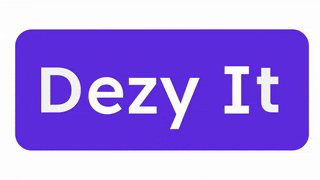Why 2025 Will Be the Year of AI-Driven Preventive Healthcare
- purvasha
- Nov 28, 2024
- 3 min read
As healthcare shifts toward prevention over treatment, artificial intelligence (AI) is becoming a cornerstone of this transformation. The year 2025 is poised to witness a surge in AI adoption for preventive care, offering unprecedented opportunities for clinics and healthcare providers to improve patient outcomes, cut costs, and enhance operational efficiency.
Here’s why AI-driven preventive healthcare is set to dominate and how clinic owners, managers, and investors can leverage it to stay ahead.

1. Proactive Health Monitoring Through AI
AI-powered tools enable continuous health monitoring, helping detect potential issues before they become critical.
Wearable Integration: Devices like smartwatches and fitness trackers collect health metrics (e.g., heart rate, sleep patterns), which AI systems analyze to identify anomalies.
Early Detection: Predictive analytics flag risks such as cardiovascular issues or diabetes early, prompting timely interventions.
Example: Fitbit and Apple Health are partnering with healthcare providers to integrate wearable data into preventive care plans.
2. Personalized Preventive Care Plans
AI’s ability to analyze vast datasets allows it to create highly tailored care plans for individuals based on their medical histories, genetics, and lifestyle.
Risk Stratification: AI identifies high-risk patients for conditions like cancer or hypertension, enabling targeted preventive measures.
Lifestyle Recommendations: AI tools provide personalized advice on diet, exercise, and stress management, increasing adherence to preventive strategies.
Impact: Personalized plans ensure care is both effective and patient-centric, improving outcomes while reducing unnecessary costs.
3. Automating Preventive Care Administration
Administrative tasks, such as appointment reminders and record-keeping, are streamlined with AI, saving time for both patients and staff.
Automated Reminders: AI sends personalized notifications for screenings, vaccinations, and routine check-ups.
EHR Management: Systems like Epic integrate AI to manage patient records, ensuring all preventive care activities are tracked seamlessly.
Benefit for Clinics: Reduced administrative burden and improved patient compliance with preventive measures.
4. Addressing Health Inequities
AI is bridging the gap for underserved populations by making preventive healthcare more accessible.
Telehealth Expansion: AI chatbots provide remote consultations and symptom assessments, reaching patients in rural or underserved areas.
Language Support: Multilingual AI tools break language barriers, ensuring patients from diverse backgrounds receive accurate care.
Why It Matters: These tools are critical for addressing disparities in healthcare access and improving public health outcomes.
5. Cost Efficiency for Healthcare Providers
Preventive care is inherently more cost-effective than treating advanced diseases, and AI enhances this efficiency.
Reducing Hospital Admissions: By identifying risks early, AI minimizes the need for expensive emergency care.
Optimizing Resource Allocation: AI analyzes patient data to predict care demands, ensuring clinics are appropriately staffed and stocked.
ROI for Investors: Cost savings and increased efficiency make AI-driven preventive care a smart investment for healthcare ventures.
6. Enhancing Patient Engagement
Preventive healthcare requires active patient participation, and AI tools are making this easier than ever.
Conversational AI: Chatbots engage patients with interactive health tips, reminders, and progress tracking.
Behavioral Nudges: AI sends motivational prompts to encourage healthy habits, such as taking medication or exercising regularly.
Outcome: These interactions foster a sense of accountability and improve adherence to preventive care plans.
7. The Role of Predictive Analytics in Public Health
AI doesn’t just benefit individual patients—it also supports large-scale public health initiatives.
Disease Outbreak Prediction: AI models analyze environmental and population data to predict outbreaks, enabling early interventions.
Community Health Insights: Data-driven insights help clinics design programs to address prevalent local health risks.
Example: The CDC’s use of AI during the COVID-19 pandemic highlights its potential in preventive public health efforts.
Conclusion: Why 2025 Is the Tipping Point for AI in Preventive Care
By 2025, AI will redefine preventive healthcare, providing scalable, personalized, and cost-effective solutions for patients and providers. For clinic owners, managers, and investors, embracing AI now is the key to staying competitive in a rapidly evolving healthcare landscape.
Investing in AI-driven preventive care not only future-proofs healthcare operations but also aligns with the broader shift toward value-based care—a win for everyone involved.
Learn more at:


Comments